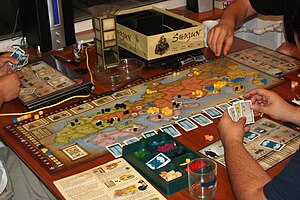- Freedom is that instant between when someone tells you to do something and when you decide how to respond. #
- RT @keepinspiringme: Win a Canon EOS 450D SLR camera by simply tweeting the #kimcanon hashtag. #
- RT @mbhunter Carnival of Personal Finance: Parts-of-speech abuse edition http://bit.ly/7cyAqV #
- Note to self: While misusing the faucet sprayer may make me giggle, my wife is not so appreciative. #
- RT @copyblogger On Dying, Mothers, and Fighting for Your Ideas http://bit.ly/7gZgW3 #
- Blackberry? Good or Evil? #
- Round 1: Me v Snow. Winner: Me. #
- RT @The_Weakonomist: Men, I've learned that in relationships, you can be happy, or you can be right. #
Time vs Money Redux
Saving money is a good thing
Saving time is a good thing.
Somewhere in between, there has to be a balance. It’s possible to spend far too much time to save very little money.
For example, on September 30th, I left for the Financial Blogger’s Conference. Thinking I’d be frugal and save a little money, I told my GPS to avoid the toll roads. According to Google maps, the cheap route should have added 20 minutes to my trip. Coming into Illinois from Wisconsin on the toll roads, it’s easy to spend that much time waiting to pay the toll, since I don’t own an Illinois magic toll-paying box.
Unfortunately, the little smart-a** suction-cupped to my windshield sent mebthrough every construction zone between Wisconsin and Schaumberg, Illinois.
That sucks.
I went through a series of little towns with speed limits that randomly changed from block to block. Road construction had half of the roads down to just one lane. All told, I saved $3.40, judging by the tolls heading home, but the horrible detour cost me well over an hour and a half of time.
I saved $3.40, but lost 90 minutes. That’s not a good return on investment.
Just a month ago, I was ripping into my mother-in-law for wasting half an hour to save 75 cents. Then I have to go and demonstrate how horrible I am at making that save time vs money judgement.
I need to work on that.
What’s the most time you’ve spent to save a small amount of money?
Make a Budget

- Image by r.lovewell via Flickr
In the past, I’ve gone through a detailed series of budget lessons demonstrating how to make a budget and showing my personal budget spreadsheet template. If you weren’t here to see them develop, you probably haven’t seen them at all. I’ve never built an actual index for those posts.
This is the master index of my budget planning resources. As I develop more, this will grow.
Budget Lesson #1 – In this lesson, I go over how we handle discretionary income and I explain our modified envelope system. The discretionary budget contains things like our grocery bill, or the clothes we buy. We have near-total discretion over what is purchased, hence the name.
Budget Lesson #2 – Lesson #2 contains the details of our monthly bills. These are the ones that are consistent, predictable, and actually due each month. Most people take these for granted as the bills they have to pay, but it’s not true. You can get almost all of your regular bills reduced just by asking. You would also be surprised what you can do without, when properly motivated.
Budget Lesson #3 – This is where I explain how we deal with the non-monthly bills. That is, the bills that have to be paid, but are not due on a monthly basis. I also share the personal budget spreadsheet template I developed. I am working on a few sample templates to match various imaginary scenarios. If you’d like to be an anonymous case study, and get free help setting up a budget, let me know, please.
Budget Lesson #4 – In this lesson, I describe our “set-aside” funds for things that will need to be paid eventually, but not on a set schedule. Sometimes, they are never actually due. We set aside money for the parties we throw, for car repairs and for a number of other things. A few of these items are outright optional, but they are part of what makes life fun. You can’t make a budget without including some of the extras.
Budget Lesson #5 – This is the companion piece to lesson 2. Learn how I’ve reduced–or attempted to reduce–each of these bills. For the better part of two years, I called Dish Network every few months to ask for a discount. For almost 2 years, it was granted. Then one, day, they told me they were putting a note on our account to keep us from getting any more discounts, so I canceled. 100% discounts help us save more.
Budget Lesson #6 – This is the reduction companion to lesson 3. These bills are harder to reduce. Have you ever successfully gotten your property taxes lowered?
Budget Lesson #7 – This is the reduction companion to lesson 4. Notice a pattern, yet?
Budget Lesson #8 – Here, completely out of order, is the reduction companion to lesson 1. Watch as I magically reduce–or rationalize–our discretionary budget.
So, dear readers, what part of budgeting should I address next?
Working My Life Away
Since J. and Crystalare playing, and I don’t have a post scheduled for today, I thought I’d share my work history, too.

There are a couple of interesting things about my work history. Job #1 started when I was 6. Job #9 started when I was 21. I’m 33 now.
- Paper route. I delivered the local ad-rag. The route was split with my brothers. When I was 6, my share of the route was just the street we lived on. I think I had 8 papers to deliver. Later, that expanded to almost half of our tiny town.
- Odd farm jobs. I spent some time doing whatever needed to be done on a local hobby farm. That means everything from helping shore up a sagging wall in the barn to raking walnuts off of the yard.
- Dishwasher at my school. My freshman year, I gave up a study hall to wash dishes and serve lunch. My school was K-12, so I’d eat at the same time as the little kids, then wash their dishes and serve lunch to the rest of the students for $4.25/hour. I kept at it until my senior year, when I decided to relax a bit.
- Construction. Working with my Dad, until I fell off a ladder and severed a tendon in my finger when I landed. Easily the most difficult boss I’ve ever had, but it was excellent preparation for every other job I’ve ever had. His philosophy was that if he had to ask for it, I should have already known he needed it. Try carrying that training into another job and see if they complain.
- Dishwasher/Cook. I turned 16 and needed a job to afford a car that I needed to get a job. Nasty cycle. It took a couple of weeks of looking. Apparently, if a teenager puts on a nice shirt and shows up to the interview on time, he is way ahead of the curve. It took about 2 months to go from dishwasher to cook, and I kept the job until I was 18. I was working full-time all through high school.
- Palletizer. I spent 9 months standing at the end of a conveyor belt, picking up 50 pound bags of food powder mixes, taking 3 steps, and putting them on a pallet. We averaged 1500 bags per night. Fifteen years later, I still can’t comfortably button the cuffs of most shirts. When I flex, my forearms look like I have an unhealty “adult” internet addiction.
- Cook. While I was palletizing, I had a second job as a cook at a bar, working for a guy who was trying to avoid turning a profit by drinking his main product. This was 5 miles from the other job, and my car died right after I started, so I biked from job to job. In Minnesota. In the winter. I was a lean, mean popsicle.
- Machine Operator. I moved from the sticks to the Minneapolis area and was immediately hired to be run a CNC machine based on a friend’s recommendation to his boss. The pay was great for an 18 year old with no skills. I worked 5 twelve-hour graveyard shifts. The job mostly consisted of putting a little chunk of metal into a machine, closing the door, pushing a button, and sitting down for 15 minutes. This is the period of my life that trained me to shop for books based primarily on thickness.
- Bill Collector/System Administrator. After Brat #1 was born, 12 hour graves got to be a big pain. I’d work from 5 to 5, come home and make sure my wife got at least 4 hours of sleep, then I’d sleep for 4-5 hours and go back to work. Brat #1(who is now 13 and about 6 feet tall) needed to be fed every hour, so solid sleep didn’t happen for months. I took a pay cut to work normal, day-shift hours. I ended up working my way through college by collecting on defaulted student loans. Shortly after I graduated, I got promoted to be the system administrator of the collection system, responsible for hundreds of millions of dollars of debts flowing into and through our system correctly. I had a security clearance allowing me access to the Department of Treasury’s computer system. After a few years of this, the company decided that there were too many people with the same job description, so 5 overworked admins got laid off while the 6th got screwed with far too much work.
- Software Engineer. This is now. I write cataloging and ecommerce software, while managing a small team of programmers. I spend half of my day working on customer software estimates, training, and assisting on sales demos and half of my day writing code. I’m kind of a big deal.
That’s it, if I don’t count my side hustles. I’ve been earning a paycheck for 27 years, and have only had 10 jobs.
When did you start working? How many jobs have you had?
5 Ways to Help Your Friends Stay Out of Debt
There’s a saying that you are the average of your 5 closest friends. Take a look at the people you hold dearest. Combined, they are you. If they are all in debt, chances are, so are you.
As a corollary, you are a part of your friends. If you become more financially responsible, it will rub off on the people who care about you.
Given these two rules, one way to improve yourself is to help those around you improve themselves. If your influence convinces your friends to move closer to your ideal, it will be easier, almost effortless to move closer to it, yourself.
It sound manipulative, but if you are manipulating your friends, you are doing it wrong. Don’t try to force or trick your friends, just be honest and sincere in your efforts to help. Nobody wants to be in debt. This is you being nice.
1. Suggest cheap activities.
While it is okay to splurge occasionally, don’t be afraid to suggest less expensive activities. If someone suggests going to a movie, mention the dollar theater. If they want to go out for dinner, offer to host a potluck. Trip to the casino? Game night at your house. There are almost always cheaper ways to have fun. As long as you are spending time with the people you love, you’ll have a good time. Do you really need to drop $100 to do that?
2. Don’t flaunt your toys.
If you buy an iPod and immediately run to show it off, you are going to trigger a case of “keeping up with the Joneses”. If your friends spend all of their time around people who are constantly buying expensive toys, buying expensive toys becomes normalized in their minds. Debt becomes the norm. Then extreme debt. Don’t reinforce the destructive debt cycle by showing off the expensive trophies of excessive, unnecessary consumerism.
3. Point out opportunities to save.
This is a fine line to walk. If mention how much money your friend is wasting on 13 shot venti soy hazelnut vanilla cinnamon white mochas with extra white mocha and caramel every single morning, you’re going to get annoying fast. In fact, you are already annoying me, so knock it off. On the other hand, if Caribou is having a sale on the 13 shot monstrosity, speak up. Nobody is going to complain about getting a $15 coffee for less than $10.
4. Give them a side hustle.
If you’ve got a friend who’s into landscaping and you’ve got a neighbor who needs a landscaper, make the connection! If you know a web designer and a business in need of a website, get them together. Do what you can to match the needs of the people around with each other. They will all appreciate it, and everyone will be better off. Be the guy who helps everyone connect with the people they need.
5. Be encouraging.
Put another way, don’t be a dick. Nobody likes being nagged. Nobody likes being told they are doing everything wrong. Be encouraging, not mean.
If you can do all of that, it’s natural that your friends will start acting the way you want yourself to act. The less they want to waste on a trip into debt, the less tempted you will be to do the same.
The End of Litter
In honor of Earth Day (a day late), I’m going to talk about ending litter.

Not the stuff you find on the street or throw from your car window. I don’t mind that because, on a long enough timeline, everything is biodegradable. Mother Nature is tougher than I am. She can handle my McDonald’s wrappers.
No, I’m talking about the real scourge: cat litter.
We’ve got four of the things, and let me tell you, they make poop. Everyday. I keep telling my wife that they are going to continue making poop as long as we keep feeding them, but she continues to give them food.
For those of you who don’t know, most cats use a litter box, which is a fun pan full of a sand-like mixture of diatomaceous earth and bentonite clay, which trains your cat to use the neighbor kid’s sandbox if you let the little potsticker go outside.
Thanks for that.
So, everyday, our four cats crap in a couple of pans full of sand. Until the sand pans get too full of cat crap. Then, they use the couch.
Who decided this was a good system? Is it a conspiracy of Big Couch to force people to buy new furniture on a regular basis, the way Big Oil suppressed the 1000 mile-per-gallon carburetor, Big Pharma suppressed the cure-all hemlock pill, and Big Sword suppressed world peace during the Dark Ages?
There’s got to be a better way.
Right?
Enter the CitiKitty. It’s the miracle cat potty trainer featured on The Shark Tank.
Here’s how it works:
- Move the litter box to the bathroom and start using flushable cat litter.
- Once the cats are comfortable with that change, put the CitiKitty on the toilet, under the ring and add litter.
- In a week or two, when all of the cats are comfortable with the setup, pop out the center ring of the CitiKitty. This gets the cats used to doing their business over water.
- Every couple of weeks, pop out another ring until the cats are used to standing on the slippery ring and crapping directly into the water. Praise the cat when it happens, because cats give a crap about your opinion.
- Throw the litter box away and brag to your friends.
Because I love testing things to make my life easier, and I hate cat crap, I gave the thing a try.
It worked great until step 3. Apparently, pooping directly into water is similar to trapping a vampire with running water and causes the cats to panic and find somewhere else to poop, never to return to the bathroom.
There’s really nothing better than stumbling into the living room half asleep, turning on the news and flopping onto the couch, only to find a little lump, still warm, under your butt.
Don’t get me wrong, step 2 was a pain in the neck, too. In order to use the toilet, you have to take the stinking sandbox off of the toilet without spilling litter all over the bathroom, find a place to set it that isn’t disgusting, do your business, put the litter pan back on the toilet, and wash your hands really hard. If you’re a friend of my son’s sleeping over, it’s easier just to not notice the litter box sitting there and top it off in the middle of the night.
It’s a heck of an idea. The best execution I’ve seen for getting a cat to crap in the toilet.
But it doesn’t frickin’ work. If you’ve got a cat using the toilet, I’m guessing you had to sacrifice the neighbor kid to some kind of evil Lovecraftian entity to make it happen, because the CitiKitty didn’t do it.




